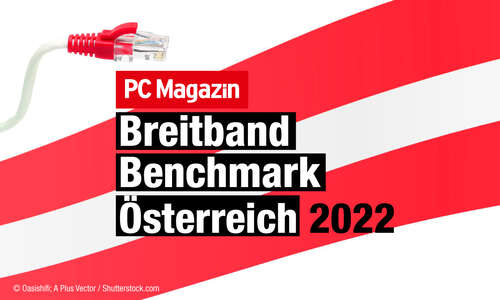Tech
Broadband benchmark 2022 – Austria: where and with whom is the best internet experience?

- Broadband benchmark 2022 – Austria: where and with whom is the best internet experience?
- Broadband Benchmark 2022 – Austria: Test Results
- Broadband benchmark 2022 – Austria: This is how we tested it
No shame: There are around four million private households in Austria, but only just under 2.6 million landline connections. And that includes business customer access. This ratio illustrates the importance of mobile communications in the Alpine republic.
Notwithstanding, wired landlines form over copper (xDSL), broadband cable (DOCSIS) and to a (too) small extent also via fiber optics (FTTH or FTTB) is the backbone of the household Internet supply.
With good reason: a high-performance landline connection is still the clear first choice, especially for demanding online services such as video streaming in high quality and stability or ambitious multi-player action gaming. In addition, most mobile phone offers do not yet offer the data volume that typical households need.
The focus of the broadband benchmark is the overall performance from the user’s point of view
Irrespective of the different access technologies, the broadband benchmark focuses on the holistic Internet experience at home from the user’s point of view. One of the questions asked was which one data rates and runtimes the users in their home Wi-Fi network with their tariff received from your provider.
during the six-month test period was also measured how high the possible data rates of the examined connections were. This speed tests has determined umlaut for downloads and, for the first time, also for uploads. The actively measured data rates have a high priority in the evaluation. They provide information about which services were actually available on site in the WLAN/WiFi networks.
The evaluations are based on more than 3.7 million measurement samples
From March to August, umlaut, with its internationally used framework 35,452 lines from the three national operators (with the regional ones there are even 40,204) examined and over 3.762 million measurement data of the three national operators (including the regional ones there are even 4.197 million measurement data). A broad database is one of the strengths of this renowned, user-oriented test and analysis method (crowd sourced). Its regulations are developed further year after year and adapted to the ongoing technical modernization of the networks.
In concrete terms, this means that the established KPIs (Khey Pperformance Indicators) such as the data rates or the runtimes, the requirements were sometimes higher this time. In addition, umlaut has expanded its analysis this year.
For the first time, active measurements of upload data rates and stability are included in the broadband benchmark. With the latter criterion, the success rates for typical Internet transactions such as website calls were examined.
Detailed information on the test procedure and the evaluation
Determined: The best overall user experience – nationwide and in the most populous states
The broadband benchmark 2022 also gives a realistic overview of the internet experience of the nationwide active network operators A1 telecom, Hutchison Three and Magenta telecom have made available to their users throughout Austria. In addition, we select the best Internet Service Providers (ISPs) in the most populous federal states, where the regional broadband cable and fiber optic providers such as cable plus, Livest and the Salzburg AG create additional competition.
Before we get to the evaluations, one more innovation: In a separate evaluation, we compared how Reliable the three major network operators exclusively Basic Internet Services have provided. This supplementary analysis is derived from the data pool of the overall evaluation.
It should be of particular interest to those who can do without high data rates and short runtimes for their e-mail correspondence, for surfing and their online orders, but don’t want to skimp on reliability. After all, even those who mainly use less demanding standard services on the Internet certainly don’t want to be bothered with more frequent connection setup problems or even disconnections, right?

